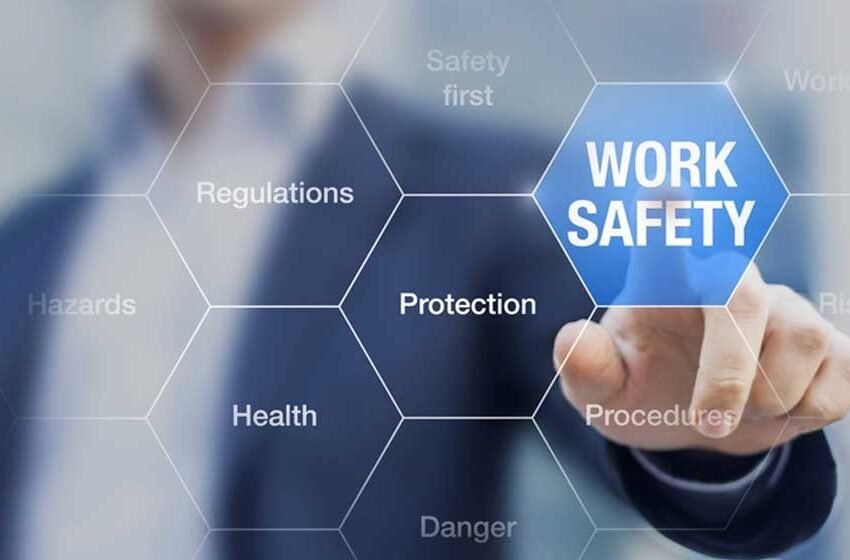Safe Workspaces: How Businesses Protect Employees and Reduce Risks

The Foundation of Workplace Safety
Creating a truly safe working environment is about more than simply meeting regulatory demands—it has become a foundational pillar of any thriving business. Today’s forward-thinking organizations recognize that investing in safety is an investment in their people, productivity, and business reputation. When employees feel secure, they are more confident, engaged, and empowered to do their jobs with focus and pride. Leadership sets the tone for safety by making it a top-down priority, but real success hinges on the daily actions and awareness of everyone in the workplace.
A vital part of this protective approach is having comprehensive workers compensation insurance in place. This coverage provides support in the event of accidents, ensuring that injured staff receive prompt care and financial assistance. Yet, businesses that succeed in minimizing incidents in the first place tend to rely on more than just insurance. They develop robust safety policies, implement easy-to-use reporting systems, and actively engage team members in identifying and mitigating hazards. Studies show that clear communication and accessible prevention measures lead to faster resolutions and lower incident rates, putting businesses on a firmer footing for sustainable growth.
Core Elements of Injury Prevention
Preventing workplace injuries calls for an ongoing, dynamic process. One-time solutions or basic safety signs often fail to meet the needs of today’s fast-paced environments. Businesses that excel at protecting their teams base their prevention programs on real data, frequent feedback, and opportunities for employees to participate in risk assessments. Routine safety audits, conducted through walk-throughs, checklists, and feedback sessions, enable risks to be identified before they escalate into genuine threats.
- Industry-tailored strategies:Safety challenges can differ vastly from one workplace to another. Manufacturing plants prioritize machine safety and personal protective equipment, while healthcare settings focus on biohazard management and slip prevention. Understanding your unique environment is key.
- Frontline feedback:Creating a feedback-friendly workplace where staff can openly call out hazards fosters a proactive environment. Frontline workers spot daily risks that leadership might miss from a distance, and their input helps shape more practical policies.
- Continuous improvement:No program should remain static. Businesses that stay agile—updating safety protocols after incidents, listening to staff stories, and embracing ongoing learning—outperform peers who rest on their laurels.
According to guidance from OSHA workplace safety experts, environments where open dialogue about hazards is encouraged tend to see much lower incident rates. This trust leads to more accurate reporting, root cause analysis, and genuinely safer environments.
Understanding Workers’ Compensation as a Resource
Despite best-laid plans, workplace injuries can and do occur. When the unexpected happens, workers’ compensation serves as a crucial lifeline, providing medical care, income replacement, and a framework for a safe return to work. For employers, understanding these resources not only meets legal obligations but also demonstrates caring leadership and helps retain talent by supporting employees at their most vulnerable moments.
Workers’ compensation laws vary by state, but they all share a core purpose: to simplify and speed up help for injured employees while reducing the risk of expensive and drawn-out legal disputes. Timely filing, clear communication, and upfront education about the claims process encourage swift resolution. Employers that train their teams on how to report incidents and access compensation help reduce confusion during challenging times, leading to higher morale and overall trust in the organization.
The Role of Technology in Creating Safer Workplaces
In recent years, technology has rapidly shifted the landscape of workplace safety. From wearables that monitor employee posture and fatigue to smart sensors measuring noise, temperature, and air quality, digital tools are revolutionizing how hazards are identified and addressed. Apps now allow workers to instantly report spills, unsafe conditions, or near misses using nothing more than a smartphone, reducing the lag between identifying problems and resolving them.
Current research discussed in Safety+Health Magazine shows that technological advances are reducing injuries across multiple industries. For example, predictive analytics platforms are helping warehouses and manufacturing sites track common injury trends over time, letting safety managers take preemptive action before someone gets hurt. Digital innovations also provide easier ways to log and investigate safety incidents, supporting a learning culture rather than a punitive one.
Best Practices for Training and Engagement
Ensuring that everyone knows what to do in the event of a hazard, or better yet, how to prevent one, requires ongoing, interactive training. The days of merely passing around a safety manual are gone. Today’s businesses employ a blend of engaging classroom sessions, on-the-job mentoring, and digital learning modules to keep content relevant and memorable.
- Alternate between in-person and online training to accommodate diverse preferences and schedules.
- Utilize scenario-driven workshops and role-playing, which enable employees to practice handling emergencies in a risk-free environment.
- Distribute memorable infographics and place visual cues in high-traffic areas to keep safety at the forefront of everyone’s mind.
- Build a culture of open communication so that staff can easily share feedback or report unsafe procedures, knowing that their input leads to real change.
Consistent, interactive training not only fulfills regulatory requirements but also helps equip teams with the confidence and knowledge to respond effectively under pressure. When employees are invested in safety and encouraged to participate, everyone shares in the organization’s well-being.
How Transparent Reporting Reduces Risks
Effective risk reduction relies on trustworthy reporting systems that encourage employees to report hazards and injuries. Building this trust involves ensuring confidentiality, prompt follow-up, and transparent communication about resolutions. Implementing easy and anonymous reporting can help identify near-miss incidents, allowing companies to address smaller issues before they escalate into serious problems while reinforcing employee confidence in leadership’s responsiveness.
Staying Ahead With a Culture of Safety
Building a strong safety culture is an ongoing process that involves self-reflection, innovation, and teamwork. Companies that prioritize safety through vigilance and information sharing are better equipped to handle changes and risks, resulting in improved productivity. Staying informed on industry guidelines and soliciting employee feedback fosters unity and enhances safety, resulting in fewer accidents and higher satisfaction. Ultimately, leading businesses not only avoid risks but also create better work environments, benefiting both employees and their financial success.





